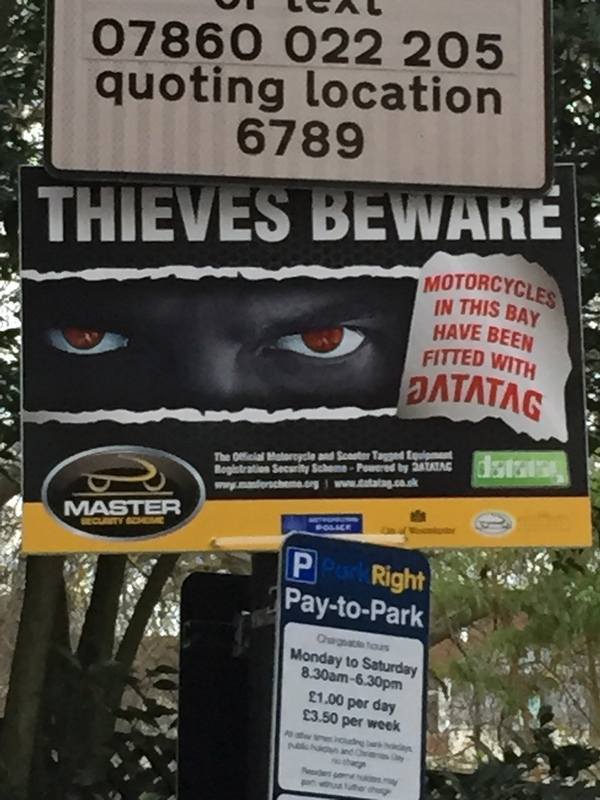Motorbike insurance – how to find the best deal
Posted on
Ensuring you have adequate motorbike insurance is as essential for a biker as having a helmet and leathers. However not all policies are the same so how do you know the policy you have provides all the cover you need?
Know what to look for…
Motorbike insurance is a legal necessity in the UK however many bikers just opt for the cheapest deal they can find. However, this can be a mistake as the cheapest deal may not offer the level of cover you require.
Choose from:
- Third party only: This covers liability for injuries to others and damage to their property.
- Third party, fire and theft: All the protection of third party cover plus cover for your own bike against theft, attempted theft and fire damage.
- Comprehensive: Everything that’s included in third party, fire and theft cover plus repairs to your own bike in the event of an accident (subject to policy exclusions). What’s offered under comprehensive motorbike insurance will usually vary between companies but typically includes medical expenses, accidental damage cover and personal accident cover.
- Third party and third party, fire and theft policies are best suited to riders who are inexperienced or who have claims and convictions on their record as premiums for comprehensive insurance may be too high. A third party deal may also be suitable if you ride a relatively inexpensive bike.
However, generally the more cover you have the better, which is why if you’re comparing comprehensive insurance you should examine the terms and conditions carefully to see exactly what is included in the policy – what is offered as standard by some insurance companies may not be included in other policies and there may also be optional extras to choose from – cover features for which you can pay an additional premium. Some of the policy options to look out for include: breakdown cover; legal expenses cover; a temporary replacement bike while yours is repaired; cover to ride other motorbikes (with the owner’s permission) in emergency situations; and travelling in Europe.
What else should you consider?
While the level of cover available should be your primary concern there are several other key factors that are worth considering while you shop around:
- Excess levels: An excess is the amount you pay towards a claim. Usually this is split into a compulsory excess established by the insurance company itself and a voluntary excess, which is an additional amount you agree to pay, when taking the insurance out, in case a claim is necessary.
- No-claims discounts: Making claims on your insurance costs your provider money – and so they rewards bikers who don’t make claims. Avoiding claims for four or more years could even reduce premiums by as much as 60 per cent.
- Other discounts: There may be additional incentives offered by an insurer – for example you may get a discount for insuring more than one bike with the same company; and there may be discounts for buying online.
- Policy exclusions: Read the terms and conditions of any policy that interests you carefully, and be on the lookout for exclusions (these are circumstances in which you will not be covered).
So which company offers the best deal?
There’s no set answer as to which motorbike insurance provider offers the best deal, or indeed which is the cheapest. This is because premiums can vary widely between insurers due to the assessments they make of how likely you are to make a claim – this can be influenced by factors including your riding history; your address – such as if you live in a busy traffic or high crime area; your annual mileage; your personal circumstances – do you use your bike as part of your job, for example; and the bike itself.
Due to the contrasts in the way these factors are evaluated it makes sense to gather as many quotes as possible before settling on the best deal. A comparison website is a great starting point as the leading websites can compare policies from as many as 25 insurance companies. The key however, is to look beyond price alone (the cheapest deal is listed first) and also consider the level of cover you’re receiving.
There are steps you can take to reduce premiums too – here are some quick tips:
- Agree to a mileage limit: The fewer miles you travel, the lower the risk of an accident occurring.
- Choose a suitable bike: Older bikes with smaller engines usually qualify for cheaper premiums as they are cheaper to repair/replace and less likely to travel at fast speeds.
- Increase excess: Agreeing to a higher excess can lower premiums but keep it at a level you can comfortably afford.
- Increase security: Consider adding electronic and mechanical security to reduce the risk of theft and park in a locked garage overnight.
- Pay annually: By paying premiums upfront you can avoid interest charges.




 The Square was identified as one of four ‘hotspots’ for motorcycle theft by Westminster City Council, with around 52 motorcycles or scooters stolen each year from its parking bays - around one a week.
The Square was identified as one of four ‘hotspots’ for motorcycle theft by Westminster City Council, with around 52 motorcycles or scooters stolen each year from its parking bays - around one a week.